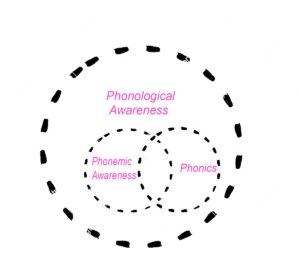Let’s talk about the Communicative Language Approach to teaching ESL: see what I did there? 😉
I think Communicative Language Teaching (CLT) is one of the easiest ways to teach a foreign language. The goal of CLT is to increase the students’ ability to communicate in the target language. That means group work, which is always fun!
Examples of Communicative Language Approach Activities
Interviews
Ask students to pair off and interview each other.
Give students a list of questions to ask each other. Be sure they are open-ended. When giving the students interview prompts, start questions with “Who”, “What”, “Where”, “Why”, or “How?”
Then, ask the students to introduce their partner to the class.
Great open-ended interview prompts:
“Who in your family do you admire most and why?”
“What was your favorite thing to do as a kid?”
“Where were you when you received the best present have ever received and what was it?”
“What is the best part of your job?”
“When is the best part of your day?”
Scavenger hunt
This game is a fun twist on the traditional scavenger hunt of your youth. Instead of finding toys or eggs hiding in the grass, students will find information from other students.
How to play:
The teacher asks students to find another student who has certain characteristics. For example, “find a student whose name starts with A, find a student whose birthday is in June, find a student who owns a dog” and so on.
Students go around the classroom asking and answering questions about each other.
The student who completes the scavenger hunt presents their answers to the class.
Icebreaker Games
Open-ended questions and icebreakers are a great source of inspiration for communicative approach activities because they encourage interaction amongst the students and cannot be answered with a yes or no.
When done successfully, the communicative language approach to teaching should foster a feeling of inclusivity and emotional safety for all the students. This will naturally lead to rapport building between the students and each other, as well as the students and the teacher. As the comfort levels in the classroom increase, the learning increases too.
This method of teaching emphasizes interaction, so there are lots of fun group activities you can give your students that will put the onus on them to communicate and put you in the role of a guide rather than a lecturer. This is often more enjoyable for you, as a teacher, because you don’t need to stand at the whiteboard and drill students.
Communicative Language Approach Activities
When teaching using the Communicative Language Approach, activities are essential. You should introduce activities in real-world situations. The ESL teachers should always present the activities in context.
Characteristics of CLT Activities
Great Communicative language approach activities in the classroom will include these characteristics:
- Integrates the 4 Macro skills: speaking, listening, reading, and writing
- Includes real-world situations
- Encourages interaction between students
- Gives Opportunity for Feedback
- Offers Choice or Decision Making
- Offers Problem-solving
- Integrates role-play
- The teacher acts as a guide or a facilitator
Communicative Language Approach: Evaluation
How should you evaluate students using the Communicative Language Approach?
The Communicative approach evaluation concerns not only the learners’ accuracy but also their fluency.
The communicative approach is based on the idea that learning a language successfully comes through having to communicate real meaning. When learners are involved in real communication, their natural strategies for language acquisition will be used, and this will allow them to learn to use the language.
Communicative Language Approach: Fluency vs. accuracy:

The Communicative approach puts emphasis on fluency and conversational skills and comprehensible output. The goal is for students to have comprehensible, not native-speaker-like, pronunciation.
Can students use translation services according to the Communicative Language Approach?
Yes, the teacher can allow students to translate words if students feel they will benefit from it.
Can you teach reading and writing using the communicative approach?
Yes, ESL teachers can introduce Reading and writing activities from day 1 when using the Communicative Language Approach.
Real-life situations often include reading and writing, so create contextual activities that promote these skills. For example, here are some communicative language approach activities that use reading and writing.
Here are some examples of communicative language approach activities that use reading and writing:
Read a Menu at a Restaurant
Book an Online Airline Ticket
Be sure to put the students in groups or with a partner. Have them book an airline ticket. You can have them plan a trip to visit each other in their respective native cities. For example, ask them to pretend they want to plan a trip to visit each other and create an itinerary.
Read a Zoo Map
Use real maps from the zoo. You can find them online, too. Ask the students to plan a trip. Give them a list of animals and ask them to find where each animal is located. How much do the tickets cost? Where can you buy refreshments?

Features of communicative language teaching: What is CLT?
The Communicative Language Teaching (CLT) or “communicative approach to the teaching of foreign languages” all refer to the same idea: the best way to teach a foreign language is through fostering genuine communication.
Students who want to learn a foreign language don’t just need to learn grammar rules and vocabulary; they need to be able to use their new language in the real world. The communicative language approach prioritizes this goal and gives students many opportunities to practice using language in real-world social contexts.
Communicative Language Teaching vs Audio-Lingual Method
While communicative language teaching is a very successful way to teach language to intermediate and advanced students, textbooks often still utilize the audio-lingual method. One way to improve upon this is by augmenting such textbooks with your own activities. Try including communicative language teaching activities as your closing activity in the PPP lesson plan.
Which students benefit from the Communicative Language Approach?
The CLT approach is great for Intermediate and Advanced learners. These students need less controlled practice and more opportunities to produce output.
Related Keywords: Communicative Language Teaching (CLT) , “communicative approach to the teaching of foreign languages”



















